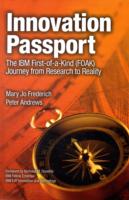- ホーム
- > 洋書
- > 英文書
- > Science / Mathematics
Full Description
After nearly 50 years of sustained research and 30 years of operational deployment, research in weather radars has witnessed tremendous growth over the past decade and is now spilling over to novel applications and geographies. This book provides a systematic and thorough review of advances in research, developments, and technologies in the field.
A truly comprehensive collection in 3 volumes, Advances in Weather Radar has been developed by three expert editors and written by senior researchers from academia, research laboratories, and national weather agencies. Every chapter has been reviewed by the editors and an external reviewer to ensure quality and accuracy.
The key elements for understanding weather radar are covered, from the fundamental science and engineering to signal processing, electromagnetics, and applications. Special attention is given to dual-polarization radar because of its important applications in rainfall measurement, in elucidating details of cloud physical processes, classification of meteorological and non-meteorological echo types, the validation and evaluation of bulk microphysical schemes that predict number density and mixing ratio, and radar hydrology among other more recent applications.
Volume 1: Precipitation sensing platforms begins with a historical overview of the last decade focusing on the key technical and scientific ideas that have propelled the field forward, and goes on to address major advances in designing, operating, and deploying weather radars across the globe. Volume 2: Precipitation science, scattering, and processing algorithms considers theoretical milestones achieved in microphysics, electromagnetics, and signal processing of radar meteorology. Volume 3: Emerging applications includes applications of weather radars in novel as well as non-meteorological applications.
These edited volumes are intended to be useful to graduate students, radar systems designers, high-level managers of national meteorological services, and other research scientists who need to delve deeper into specific topics that cannot be found elsewhere.
Contents
Chapter 1: Radar hydrology
Chapter 2: Quantitative precipitation estimation from weather radars, personal weather stations and commercial microwave links
Chapter 3: Quantitative weather radar: a research to operations perspective in Canada
Chapter 4: Volcanic plume retrieval using weather radar
Chapter 5: The effect of weather on the performance of mm-wave and sub-THz automotive radar
Chapter 6: Spectral interference in weather radars from wireless communication systems
Chapter 7: Advances in weather radar monitoring of bird movement
Chapter 8: Complementary operation of Doppler radar and lidar at airports








